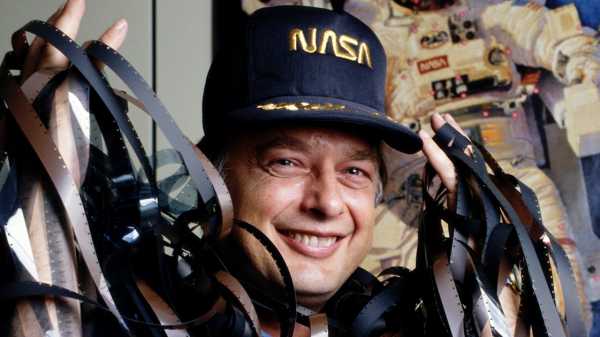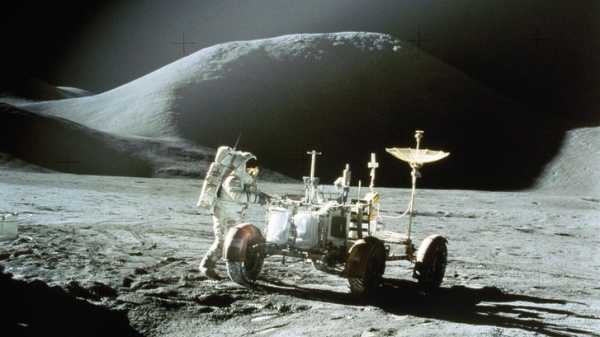
Viewers still coming back down to Earth after watching “Apollo 11,” Todd Douglas Miller’s new documentary about the spaceflight that first landed men on the moon, might overlook the dedication line in the film’s credits: “For Al and Theo.” “Theo” refers to Theo Kamecke, the director of the NASA-commissioned documentary “Moonwalk One,” from 1972, whose leftover Todd-AO 70-mm. reels of spectators watching the mission launch provided key visual elements for “Apollo 11.” Kamecke died, in 2017, at the age of seventy-nine. “Al” refers to Al Reinert, the director of “For All Mankind,” from 1989, a kaleidoscopic assemblage of Apollo-mission footage narrated by thirteen of the twenty-four astronauts involved. Reinert, who received an Oscar nomination for the film, and another for co-writing Ron Howard’s “Apollo 13,” died recently, at the age of seventy-one, at home, in Wimberley, Texas. Reinert did not live to see the thirtieth anniversary of his film’s release, in January, or the fiftieth anniversary of the moon landing, which will occur in July. But his influence can be seen throughout “Apollo 11,” which expands to regular theaters on Friday, following a one-week IMAX run.
Though there is a rich tradition of space exploration in narrative film—from the umbrella-wielding wizard scientists giving our nearest natural satellite a black eye in Georges Méliès’s “A Trip to the Moon” (1902) and Dave Bowman’s travels to Jupiter and Beyond the Infinite in Stanley Kubrick’s “2001: A Space Odyssey” (1968) to more recent efforts, such as Christopher Nolan’s “Interstellar” (2014), Damien Chazelle’s “First Man” (2018), and Claire Denis’s “High Life,” which will be released next month—documentary depictions of space travel previously had to rely either on artist renditions, as in the case of the three animated specials that ran between 1955 and 1957 at Disneyland, or on the same overused, grainy footage from television news programs. In “For All Mankind,” however, Reinert showed audiences what space really looked like. He accomplished this by combing through millions of feet of unused mission footage, then blowing up the 16-mm. originals to 35-mm. Early television shots transmitted from Apollo missions, and particularly from the moon, were blurry and indistinct, and viewers did not always know what they were looking at on their small-screen CRT TVs, the majority of which did not display color until 1972. As a result, viewers had to rely on the chyron graphics and radio accounts provided by the astronauts and news broadcasters in order to make sense of the images on TV. For moviegoing audiences, the crystalline, cinema-scaled images in “For All Mankind” were a head-spinning revelation.
“It had a profound impact on me,” Miller, who was friends with the director, said of Reinert’s film. “When he saw the moon footage that we have in our short film for “Apollo 17”—2016’s “Last Steps”—“he said, ‘I just never get over those images of seeing people walking on the moon,’ ” Miller recalled. “He was almost giddy about it.” Reinert’s enthusiasm for the images is apparent in “For All Mankind,” which combines the stories of the Apollo missions into a single composite flight. The intensity of the training, excitement of takeoff, suspense of the journey, exhilaration of the moon landing, and relief of splashdown constitute a riveting, semi-narrative arc. The film traces these developments without ready identifiers: there are no titles indicating which shot is from which mission, there are no talking heads, and the thirteen astronauts who provide narration are not identified onscreen when they speak. The film’s prevailing aesthetic is capital-“R” Romantic, with Brian Eno’s oneiric score providing the connective tissue.

For moviegoing audiences, the crystalline, cinema-scaled images in “For All Mankind” were a head-spinning revelation.
Half a century after Neil Armstrong climbed down that ladder to the lunar surface, we have become inured to the many scientific gains engendered by the space program—in addition to formidable advances in robotics, we have G.P.S. on our phones, and millions have benefitted from breakthroughs in water purification and vaccines. But “For All Mankind” remains shocking in its beauty. In the film, there’s a shot of the moon in partial shadow, floating against an impenetrable, obsidian-colored backdrop—“moving in a blackness that is almost beyond conception,” Gene Cernan, an astronaut who flew the Apollo 10 spacecraft and commanded the Apollo 17 mission, narrates in the background. In the voice-over, Cernan describes the uncanny sight in terms befitting a philosopher rather than an aeronautical engineer and fighter pilot: “You have to literally just pinch yourself and ask yourself the question, silently, ‘Do you really know where you are at this point in time and space, and in reality, and in existence?’ ”
Several recent filmmakers have acknowledged the influence of Reinert’s film on their own work. The director James Gray, who is currently completing his own sci-fi epic, “Ad Astra,” starring Brad Pitt, said, “ ‘For All Mankind’ was an astonishment. The wonder of the Apollo missions had been something of an abstraction for me beforehand—the stuff of lectures and history books. But Al Reinert’s film made it both real and yet, somehow, more mysterious. It is a beautiful achievement, at once epic and intimate.” Shortly before the release of “Interstellar,” Nolan cited the film as one of his favorites, and the Houston Chronicle—the paper for which Reinert covered crime, and later NASA, in the nineteen-seventies—reported that Chazelle had screened the film for the entire crew of “First Man.”
Reinert’s film continues to fascinate because it quietly illuminates the scientific necessity of capturing the dazzling images of spaceflight. NASA collected incremental documentation of each of the Apollo flights, particularly during the crucial stage separations of the Saturn V rocket, in case disaster struck, as it had so many times leading up to the successful Apollo 11 mission. In order to insure that a visual record of each flight would be preserved, the Apollo astronauts would periodically jettison heat-resistant cannisters of film footage back to Earth. Similar film containers, outfitted with radio transmitters, had been launched from orbiting Corona satellites and snatched out of the air by modified C-119J and JC-130 cargo aircraft using special ropes and hooks. But NASA elected to employ another, equally improbable method for delivering the Apollo imagery back to Earth: parachuting the cannisters into the ocean, where they were recovered by Navy rescue swimmers who were required to navigate shark-infested waters in order to secure the images, which would simultaneously record these feats of engineering for future aerospace research and inflame the imaginations of millions.
It remains little remarked upon that all Apollo astronauts had to undergo extensive training in photography and cinematography, in addition to their more celebrated physical and scientific regimens. Miller points out that Neil Armstrong, Buzz Aldrin, and Michael Collins were all honorary members of the American Society of Cinematographers, and they are the first three cameramen credited in “Apollo 11.” The Apollo astronauts had impressively keen eyes for composition, as well as a rare knack for seizing the visual moment.
For all of the beauty on display in “For All Mankind,” it is worth remembering that space exploration was, and remains, a deeply territorialized and perpetually contested political endeavor. In the nineteen-sixties, the space race was a technological extension of the Cold War. Today, space remains the grandest stage on which politics and ideology play out, from the diversionary kitsch of Donald Trump’s Space Force to the way in which tech billionaires such as Elon Musk refer to Mars as a “fixer-upper” planet—a colony in waiting, ready for those fleeing the condemned warehouse-district condo project known as Earth. A forthcoming top-secret series for Apple, from the “Battlestar Galactica” showrunner Ronald D. Moore, named “For All Mankind,” is based on the presumably far-out question “What if the space race never ended?” Meanwhile, China’s recent successful placement of a probe on the dark side of the moon has reignited discussion of a real-life interplanetary conflict.
Regardless of the competing ideologies that motivate space exploration, Reinert remained a true believer in its universal good, adopting a loftier view of humanity’s relation to the cosmos. Before he died, Reinert was working on a new documentary about the International Space Station, aptly titled “Above It All.” In a teaser for the unfinished film, he appears on camera, his boyish enthusiasm undimmed by age, prophesying, “We’ve now got an entire generation of space professionals that all have the same dream, and I think that’s what’s going to enable us, as a race, as a species, to keep going.”
Sourse: newyorker.com






